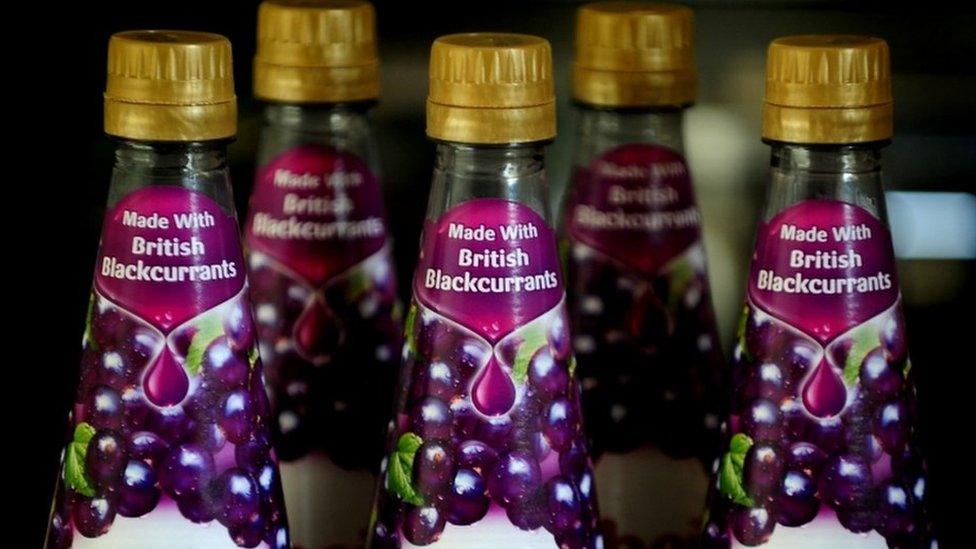Ribena waste used by Leeds scientists to make hair dyes
- Published

Blackcurrant skins can be used for pink, red, purple, violet and blue colours
A natural hair dye based on the blackcurrant waste from the production of Ribena has been created by scientists.
The dyes use waste created after the berries have been pressed for juice.
A new technique by University of Leeds scientists extracts natural colouring from the leftover skins to make dyes.
Dr Richard Blackburn said the berries "represent a sustainable supply of raw material because of how much blackcurrant cordial we drink".
About 90% of the British blackcurrant crop is used to make the branded drink, according to the manufacturer.
Dr Blackburn, a colour chemist, said the university wanted "to develop biodegradable alternatives that minimise potential risks to health" due to concerns about conventional dyes.

Almost all of the British blackcurrant crop is used to make the drink
The blackcurrant skins have high concentrations of anthocyanins, pigments that provide colour to many berries, flowers, fruits and vegetables.
Dr Blackburn said: "They are non-toxic, water soluble and responsible for pink, red, purple, violet and blue colours and are widely used as natural food colourants all over the world.
"We knew they bound strongly with proteins - hair is a protein - so we thought if we could find an appropriate source of these natural colours, we might be able to dye hair."

You may also like:

The patented technology enables the pigment to be extracted and provide intense colours on hair.
The research in the Journal of Agricultural and Food Chemistry said colours last for at least 12 washes, similar to other semi-permanent dyes.
The blackcurrant-based dyes should go on sale this summer through a university spin-off company.